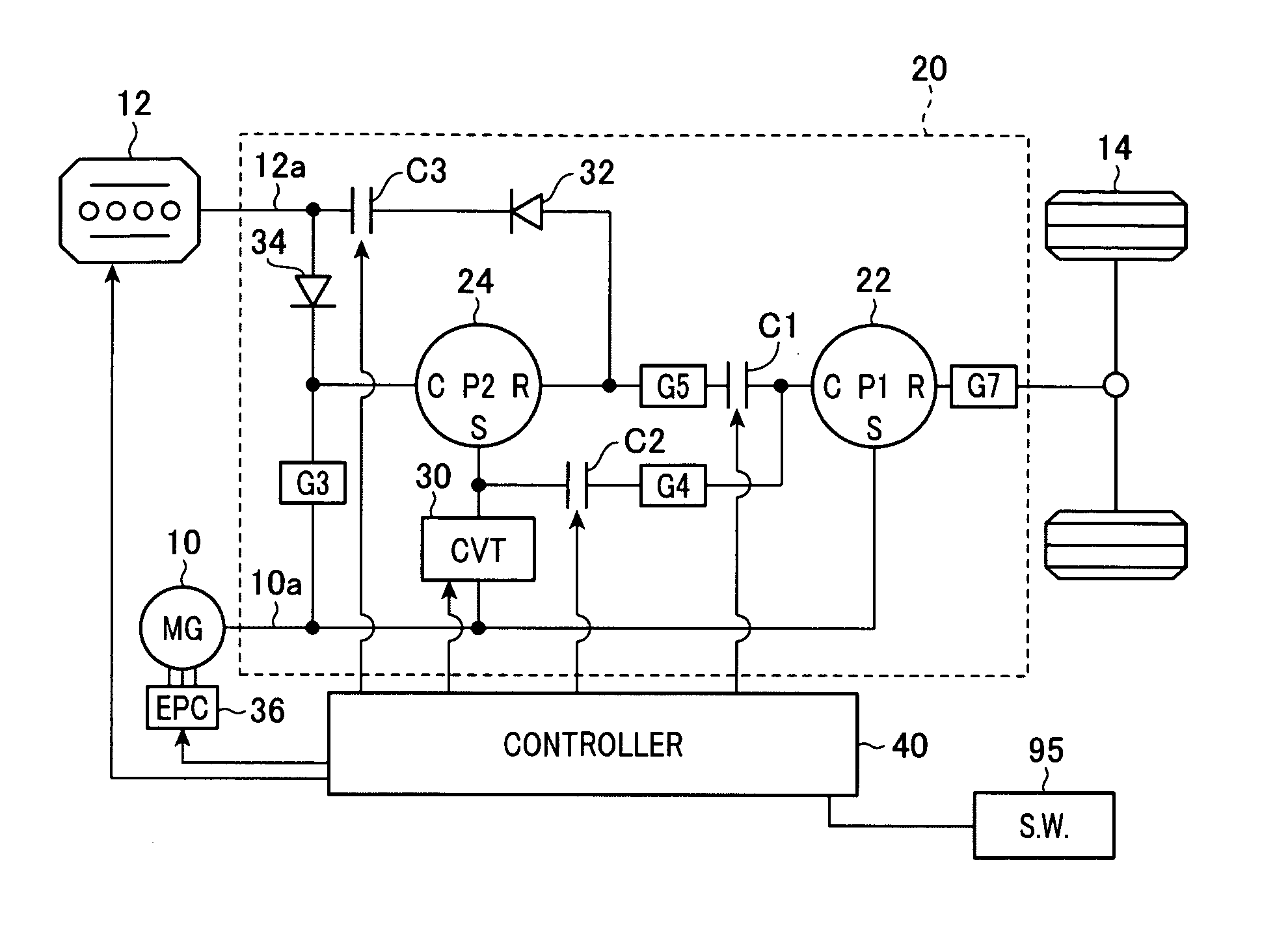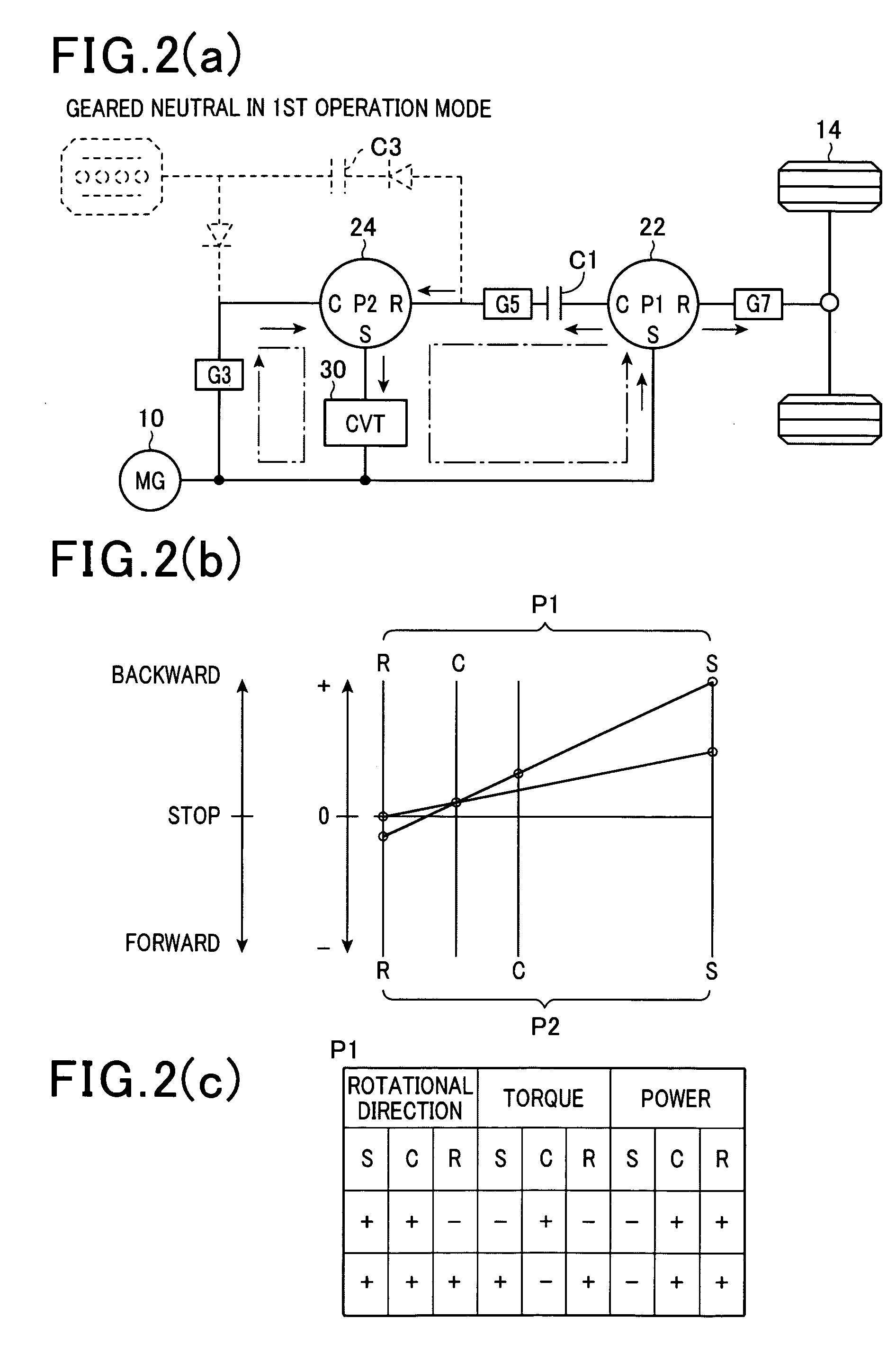Vehicle power transmission device and control system for power transmission
a power transmission device and power transmission technology, applied in the direction of engine-driven generators, transportation and packaging, transportation, etc., can solve the problems of the efficiency reduction of the use of rotational energy in the power transmission device, and achieve the elimination of the loss of rotational energy, minimizing mechanical vibrations, and eliminating the transmission of torque pulsation
- Summary
- Abstract
- Description
- Claims
- Application Information
AI Technical Summary
Benefits of technology
Problems solved by technology
Method used
Image
Examples
Embodiment Construction
[0062]Referring to the drawings, wherein like reference numbers refer to like parts in several views, particularly to FIGS. 1(a) and 1(b), there is shown a hybrid system equipped with a power transmission control system according to the first embodiment of the invention. The power transmission control system is equipped with a power transmission device and a controller working to control an operation of the power transmission device.
[0063]FIG. 1(a) illustrates the structure of the hybrid system. FIG. 1(b) is a skeleton view of power transmission paths.
[0064]The hybrid system includes a motor-generator 10, an internal combustion engine 12 (e.g., a gasoline engine), and a power transmission device 20. The motor-generator 10 is made of a three-phase ac motor-generator and works as an in-vehicle power producing device along with the internal combustion engine 12 to run an automotive vehicle. The power transmission device 20 is equipped with first planetary gear set 22 and a second plane...
PUM
 Login to View More
Login to View More Abstract
Description
Claims
Application Information
 Login to View More
Login to View More - R&D
- Intellectual Property
- Life Sciences
- Materials
- Tech Scout
- Unparalleled Data Quality
- Higher Quality Content
- 60% Fewer Hallucinations
Browse by: Latest US Patents, China's latest patents, Technical Efficacy Thesaurus, Application Domain, Technology Topic, Popular Technical Reports.
© 2025 PatSnap. All rights reserved.Legal|Privacy policy|Modern Slavery Act Transparency Statement|Sitemap|About US| Contact US: help@patsnap.com



